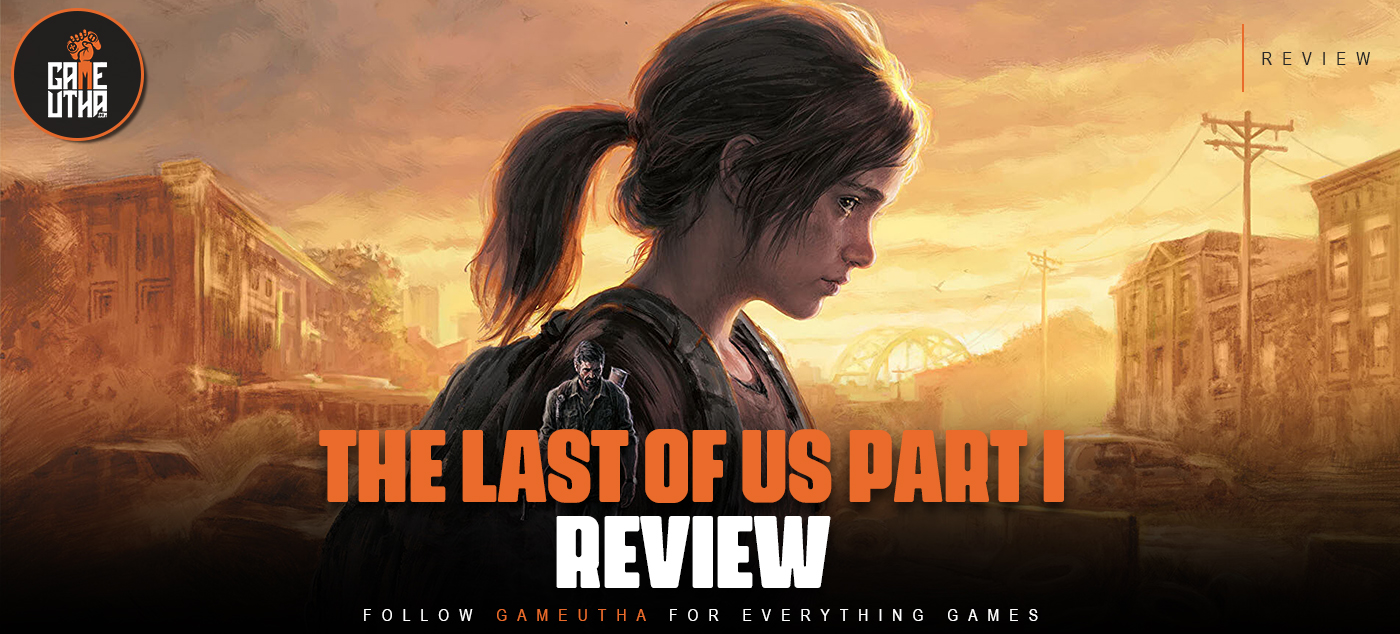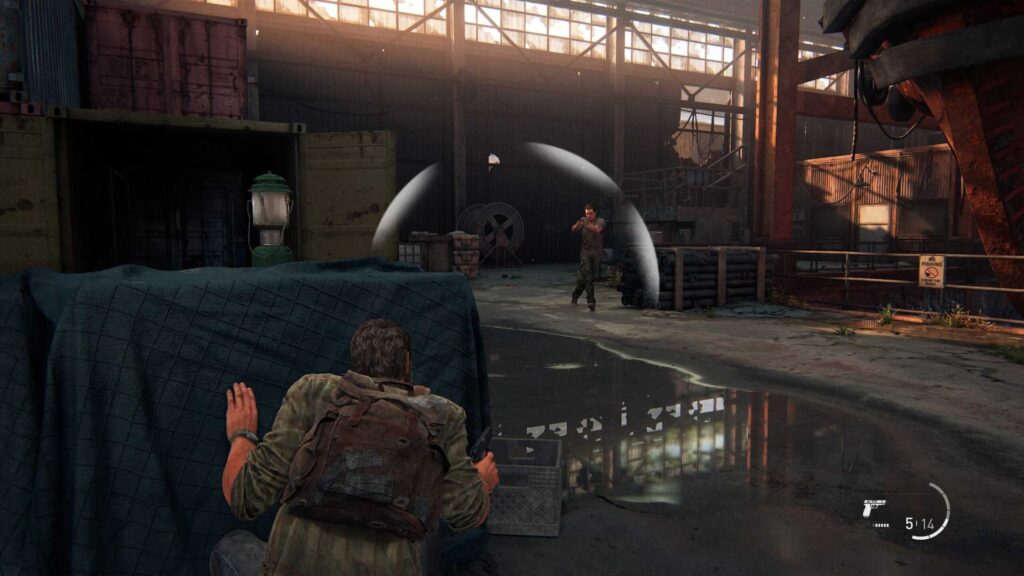The Last of Us Part I Review
Ali Hasan September 4, 2022

The Last of Us Part I was announced much to the perplexity of fans. While fans were expecting a new IP from the studio, Naughty Dog announced a made-from-the-ground-up remake of one of the most beloved games of all time. The Last of Us Part I, being a 1-to-1 remake puts it in an awkward position. Coming from Naughty Dog it is no surprise the game excels in every conceivable way over the original but what is really needed? Is it worth it and who exactly is this remake for?
The Last of Us Part I is a complete from-the-ground-up remake of the PS3 original. The developers promised completely overhauled visuals, new rendering techniques, and overhauled AI built in Naughty Dog’s latest engine, completely overhauled for the PS5.
Cinematics and Facial Animations
It was clear from the moment I started playing that careful and meticulous work had been done to remake this beloved game. The thing that immediately stood out to me was the increase in facial animation complexity. While the original featured some great facial animation work for the time, it falls short of modern standards and more importantly of the excellent work done in The Last of Us Part II.
From the subtle movement of the eyes to the deformation around the mouth and cheeks, every cutscene and cinematic becomes that much more believable. The confrontation between Joel and Ellie after she runs away becomes much more impactful when you can see Ellie’s reddening eyes fill up with tears as her voice breaks. The look of horror on Henry’s face as he shoots his brother makes the scene infinitely more chilling and disturbing. Feats like this just weren’t possible on the PS3’s pre-rendered cutscenes.

The new facial work brings the game more in line with how the actors originally performed these scenes. It accentuates what was already done by removing the constraints of the time and hardware. It truly is remarkable how much it transforms the game.
Game Director Shaun Escayg described it as “falling into the character’s eyes” and it certainly was the case. There’s a subtle connection that forms when face modeling and animation are done so believably. Every major story beat in the game elicits an emotional response from the player, which it didn’t before – and if it did not to degree that the remake does. In that sense, the game feels completely unique from the original and elevates it to new heights.
Also Read: Gameutha.com’s Most Anticipated games of 2022
Environments
The same attention to detail has also been brought over to the environments. There is an increase in geometry complexity across the board with each and every object appearing more rounded. The excellent implementation of ambient occlusion makes everything appear more grounded and accurate to the lighting.
Speaking of the lighting, this is another area that has been completely overhauled. Each and every space is now lit more believably. The way the light streams in through windows catching dust particles and playing off of the objects in the room through the use of excellent physically based rendering adds a sense of depth to the entire scene. Which is a big step up from the lighting of the original.

Textures are sharper, more accurately displaying the properties of the materials they are modeled after. Trees and plants which were rather static in the original now move against the wind complimenting Gustavo Santaolalla’s incredible score when you’re exploring the world.
Additionally, environments feel more interactable now. The increase in breakables and chippables throughout the game adds a nice bit of nuance to the world and makes combat scenarios more intense as objects break around you when enemies shoot start shooting at you.
Combat
The combat has been completely redone. Every pull of the trigger has increased intensity and weight which is further accentuated by the incredible use of the DualSense features. The best way to describe combat in Part I would be a mix between the original and The Last of Us Part II.
It retains much of the same quirks of the original including having to craft shivs with limited uses to take down clickers. While some may find this disappointing, I think it helped differentiate Joel’s combat from Ellie’s and helps retain the more intense encounters with clickers in the first game where if they get near you and you don’t have any shivs on hand they can kill you.
The Last of Us Part II features like Prone and Dodge do not make a return here. While proning can be forgiven given as it would require a lot of extra work to redesign levels to build around the new stealth mechanics the noticeable lack of a dodge button does feel rather bizarre especially given the fact that it would not require a major retooling of any kind.

However, hand-to-hand combat has the same weight and punchiness as the sequel. Every blow feels satisfying to deliver. Limb damage has been enhanced with enemies now reacting more realistically to getting shot in their phalanges.
Perhaps the biggest improvement to combat is in its AI. AI intelligence and complexity for enemies as well buddies (player companions) has been much improved.
Enemies are more likely to circle around to get a jump on you, they’re far more methodical in their engagements and approaches. Buddies automatically switch covers when an enemy is getting too close. The Original The Last of Us had a recurring problem where the buddies would cross paths with the enemies nonchalantly which while it didn’t give away your location, it took away from some of the immersion of the game.
Browse: PS5 Consoles and Games
Game Design
While Naughty Dog has done tremendous work to bring the story of Joel and Ellie more in line with the excellent visuals and combat of The Last of Us Part II, one place where the game does lack is in its game design.
The Last of Us Part I is still very much a PS3 game at its core. That isn’t to say it’s a bad game but when compared to the story and visuals the level design seems lackluster and often left me disappointed.
Most levels are intimate and compartmentalized when compared to the sequel. There isn’t much exploring to do, and given the gorgeous visuals, I really wanted to. Throughout my gameplay, I was reminded of the openness of the Seattle area in the sequel and how it provided a non-linear approach during those first few hours which I really enjoyed.

I can understand the development team wanting to stay true to the original release but some form of expanded level design would have benefited the game immensely, especially in exploration and combat scenarios.
The game also subtly reframes some cinematic shots. It’s mostly just limited to the camera positioning and focal length. The first entry is not as cinematic as the sequel with more static camera setups and simplified wide shots. This is another area where I would have liked to have seen some additional work to bring it more in line with The Last of Us Part II.
Accessibility features
The Last of Us Part I adds a slew of new accessibility features aimed at making the game more approachable and enjoyable for people with different needs. There are different tabs for audio, visual, motion sickness, and combat accessibilities.
All the features from Part II have been brought over with a few new ones including audio descriptions for cinematics and a new Dualsense feature that allows you to feel the way lines are delivered called speech to vibration.

Speech-to-vibration increases the depth of each cinematic. One instance I remember where it really worked was during Tess and Joel’s final bit of dialogue, between Tess’s more subdued vocals and Joel’s more weighty voice it added an entirely new level of immersion into the scene which I didn’t think would be possible.
Naughty Dog has gone above and beyond to make their games more accessible and has reached a new high in the Last of Us Part I.
Verdict
The Last of Us Part I, like the original represents a benchmark of what is possible in Realtime graphics rendering. It cleans up the wonky AI of the original while making combat much more grounded and weightier.
New accessibility features make this the most approachable Naughty Dog game to date. The gut-wrenching and emotional story of Joel and Ellie remains as poignant as ever and is accentuated by the incredible facial animation work and visual fidelity on display.
The game lacks expanded level design and a dodge mechanic while also doing away with its widely popular factions multiplayer mode which makes justifying the steep $70 a little hard but it manages to modernize the graphics and mechanics to deliver the definitive way to experience this masterpiece of a game.
For players looking to experience this story for the first time, The Last of Us Part I is the way to go. It bridges over nicely to the sequel and finally adds visual and mechanical parity across both titles. For returning players or players who have completed the original recently, there isn’t much there to warrant a playthrough. But if you’re a diehard fan like me you will enjoy the remake just as much as the original if not more.

Looking to pick up a PS5 to experience Naughty Dog’s The Last of Us Part I? Look no further because Gameutha.com has you covered. Browse through our listings to find your PS5 today. Gameutha.com is also home to the latest in gaming news, reviews, and updates. Stay tuned to Gameutha.com for updates on your favorite games.